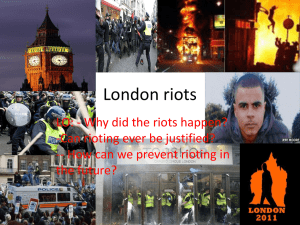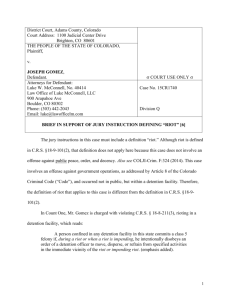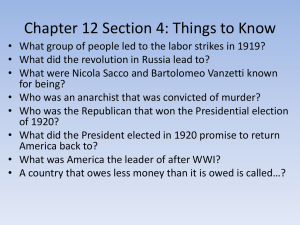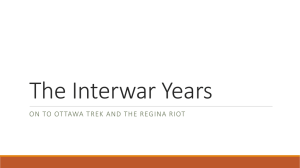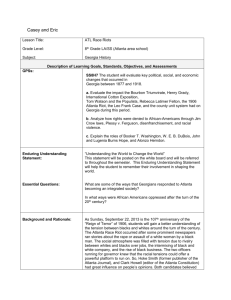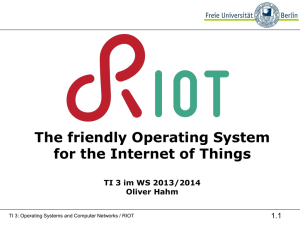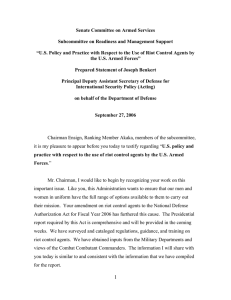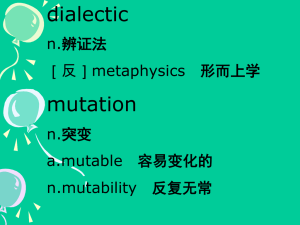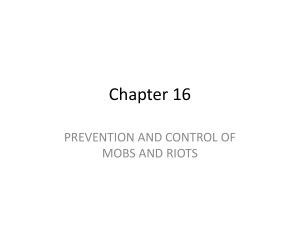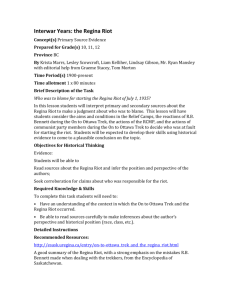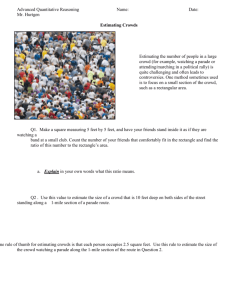Concept - mhscriminaljustice
advertisement
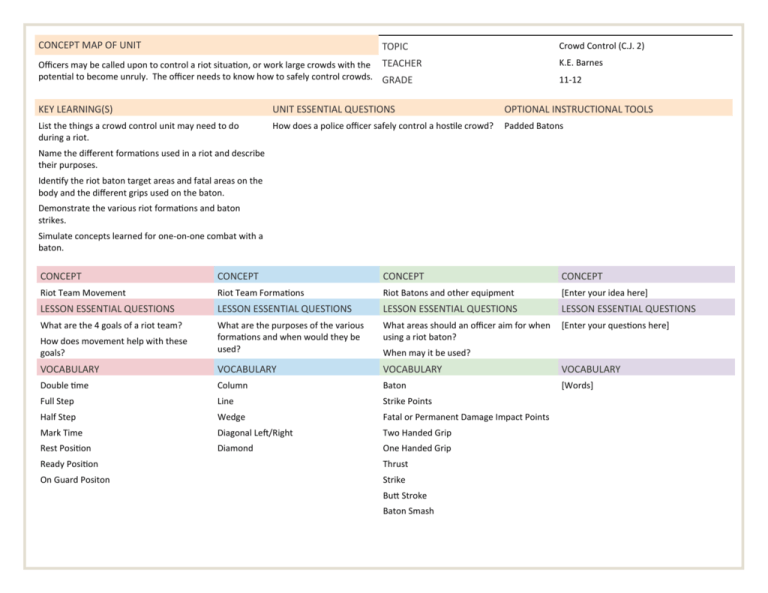
CONCEPT MAP OF UNIT Crowd Control (C.J. 2) TOPIC K.E. Barnes Officers may be called upon to control a riot situation, or work large crowds with the TEACHER potential to become unruly. The officer needs to know how to safely control crowds. GRADE 11-12 KEY LEARNING(S) UNIT ESSENTIAL QUESTIONS OPTIONAL INSTRUCTIONAL TOOLS List the things a crowd control unit may need to do during a riot. How does a police officer safely control a hostile crowd? Padded Batons Name the different formations used in a riot and describe their purposes. Identify the riot baton target areas and fatal areas on the body and the different grips used on the baton. Demonstrate the various riot formations and baton strikes. Simulate concepts learned for one-on-one combat with a baton. CONCEPT CONCEPT CONCEPT CONCEPT Riot Team Movement Riot Team Formations Riot Batons and other equipment [Enter your idea here] LESSON ESSENTIAL QUESTIONS LESSON ESSENTIAL QUESTIONS LESSON ESSENTIAL QUESTIONS LESSON ESSENTIAL QUESTIONS What are the 4 goals of a riot team? What areas should an officer aim for when using a riot baton? [Enter your questions here] How does movement help with these goals? What are the purposes of the various formations and when would they be used? VOCABULARY VOCABULARY VOCABULARY VOCABULARY Double time Column Baton [Words] Full Step Line Strike Points Half Step Wedge Fatal or Permanent Damage Impact Points Mark Time Diagonal Left/Right Two Handed Grip Rest Position Diamond One Handed Grip When may it be used? Ready Position Thrust On Guard Positon Strike Butt Stroke Baton Smash ADDITIONAL INFORMATION Practice Formations Texas Essential Knowledge and Skills for Career and Technical Education §130.294. Law Enforcement II (One to Two Credits) (11) The student implements crowd management strategies to maintain control over large gatherings. The student is expected to: (A) role play techniques employed to effectively control crowds; and (B) explain the deployment of less-than-lethal and chemical crowd control measures. College and Career Readiness Standards English Language Arts III. Speaking B. Listen effectively in informal and formal situations 1. Listen critically and respond appropriately to presentations. 2. Listen actively and effectively in one-on-one situations 2
